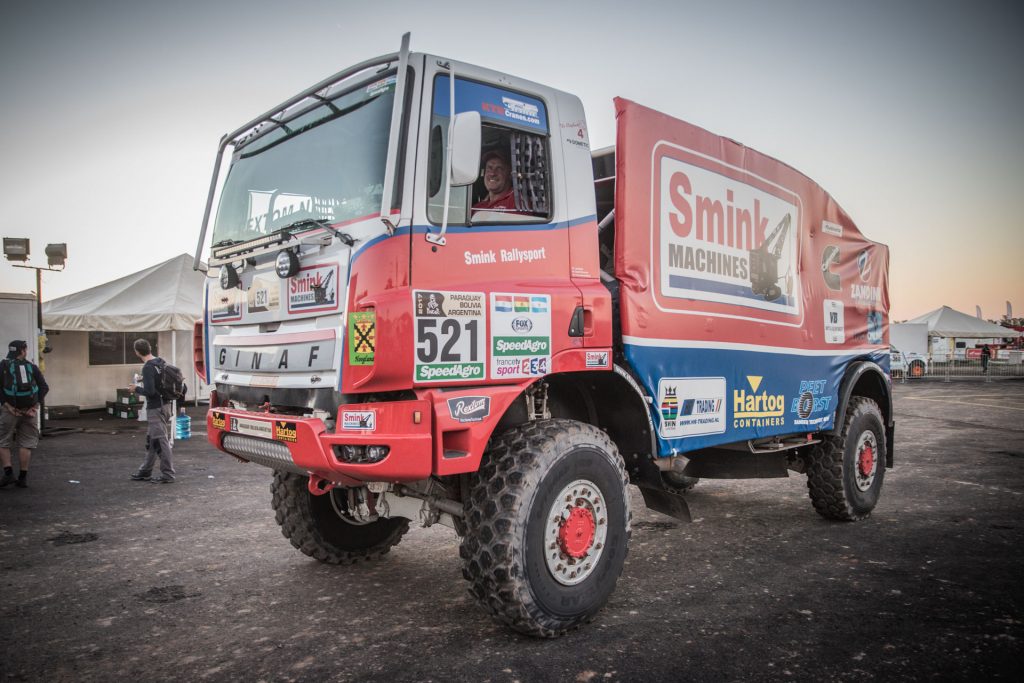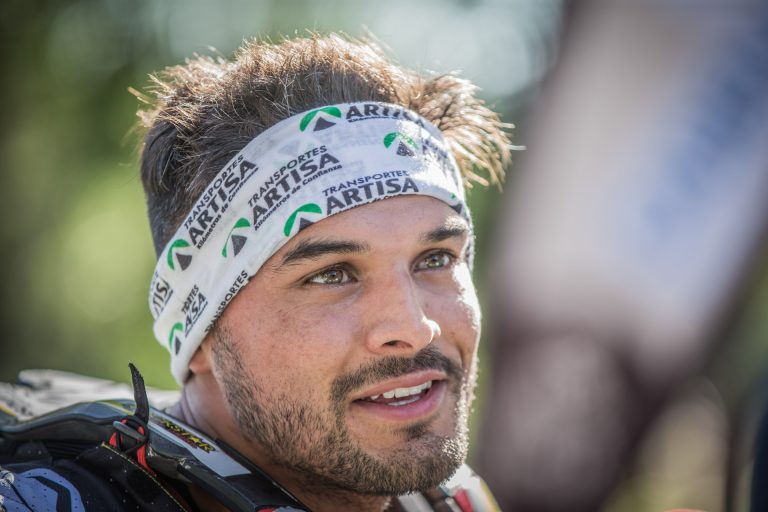Jos Smink ‘helemaal kapot’ na eerste etappe

Aan de finish van de eerste proef van de Dakar 2017 had Jos Smink even tijd nodig om op adem te komen. Ook al was het maar 39 kilometer geweest, de schroeiende hitte had zijn tol geëist. Met de twintigste tijd was Smink niet ontevreden, maar hij schrok wel van het feit dat hij zo kapot was na zo’n kort stukje. “Helemaal naar de kloten van 39 kilometer! Ik geloof niet dat ik het ooit zo warm heb gehad.”
Warm was het zeker op het parkoers op zo’n 40 kilometer van Asuncíon. Om 14.07 uur lokale tijd in Paraguay gaf Smink zijn Ginaf de sporen: op het heetst van de dag. Door het wachten voor de start, in de volle zon bij 38 graden, was het in de cabine smorend heet geworden. Het was Smink zwaar gevallen. “Het had niet veel langer moeten duren”, pufte hij. “Na 10 kilometer vroeg ik al hoe ver het nog was.” Het was inderdaad ook een heel intensieve proef, met tal van haakse bochten, verraderlijke knippen en smalle bruggetjes. “Je moest erg goed opletten”, vertelde Smink, die in het stof van de voor hem gestarte MAN van Steven Rotsaert terecht kwam. “Dat was een teken dat het met de snelheid wel goed zat, maar in het stof werd het nog moeilijker natuurlijk. Je wilt niet per ongeluk zo’n bruggetje missen.”
Leeglopende band
Daar kwam bij dat een van de banden langzaam leeg liep. Al voor de start had monteur Peter Nieuwenburg dat opgemerkt. Met bijpompen onderweg kon hij het euvel onder controle houden, maar de bestuurbaarheid van de Ginaf werd er niet eenvoudiger op. Daar stond tegenover dat de vering perfect werkte. Jos Smink: “Daar hebben we nog hard aan gewerkt met Iginio Voorhorst van VB Suspension, onze teammanager. We hebben heel wat klappen gemaakt vandaag, maar die werden echt fantastisch opgevangen.” De tweede etappe die op het programma staat is een lange (284 km) maar naar verwachting redelijk snelle proef. “Dat is wel prettig, want die snelle paden zijn minder intensief dat zo’n korte, maar uiterst technische proef als vandaag”, vond Smink. “Maar we zijn wel meteen weer gewend door zo’n etappe. Iedereen staat weer op scherp.”













